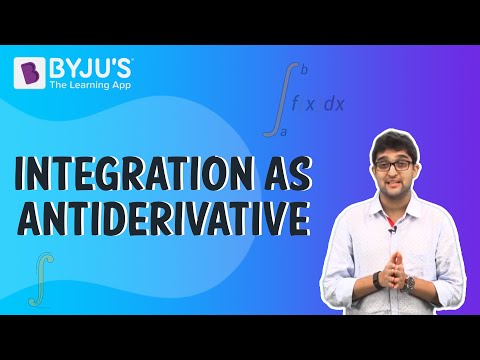Integrals
Integration is referred to the process which is inverse to that of differentiation. In the integration, we will be responsible for finding the function whose differential is provided to us. Integrals are the functions which satisfy a given differential equation.
For more information on Integration and Integrals, watch the below video.

CBSE Class 12 Maths Notes Chapter 7 Integrals – Related Links
- Integration
- Indefinite Integrals
- Application of Integrals
- Integrals For Class 12
- Application of Integrals for Class 12
- Integral Calculus

What are Indefinite Integrals?
If integration is inverse of differentiation, then
Properties of Indefinite Integrals
Integrals follow certain properties as follows:
- \(\begin{array}{l}\int [f(x)+g(x)dx]=\int f(x)dx+\int g(x)dx\end{array} \)
- For any given real number r, \(\begin{array}{l}\int r f(x)dx]=r\int f(x)dx\end{array} \)
- If f1, f2, f3 … are the functions and r1,r2,r3… are the designated real numbers. Then,
Integration using Partial Fractions
The rational function property can be seen in fractions and is followed by the ratio of two polynomials such as R(x)/S(x) where x and S(x)
Integration using Substitution
In this method, we change the variable of another variable in order to reduce the integral into fundamental integrals. We can get some standard integrals as the following.
- \(\begin{array}{l}\int tan x dx=log\left | secx \right |+C\end{array} \)
- \(\begin{array}{l}\int cot x dx=log\left | sinx \right |+C\end{array} \)
- \(\begin{array}{l}\int sec x dx=log\left | sec x + tan x\right |+C\end{array} \)
- \(\begin{array}{l}\int cosec x dx=log\left | cosec x – cot x\right |+C\end{array} \)
| Also Access |
| NCERT Solutions for Class 12 Maths Chapter 7 |
| NCERT Exemplar for Class 12 Maths Chapter 7 |
Important Questions:
Also Read:
| Substitution Method and Simultaneous Equations | Integration |
Frequently asked Questions on CBSE Class 12 Maths Notes Chapter 7 Integrals
What is calculus?
Branch of mathematics concerned with the calculation of instantaneous rates of change (differential calculus) and the summation of infinitely many small factors to determine some whole (integral calculus).
What are the real life uses of integrals?
In real life, integrations are used in various fields such as engineering, where engineers use integrals to find the shape of building.
What are the uses of differential calculus?
1. Statistics 2. Data evaluation 3. Credit card/debit card calculations 4. Space technology 5. Mechanical/civil engineering industries
Comments